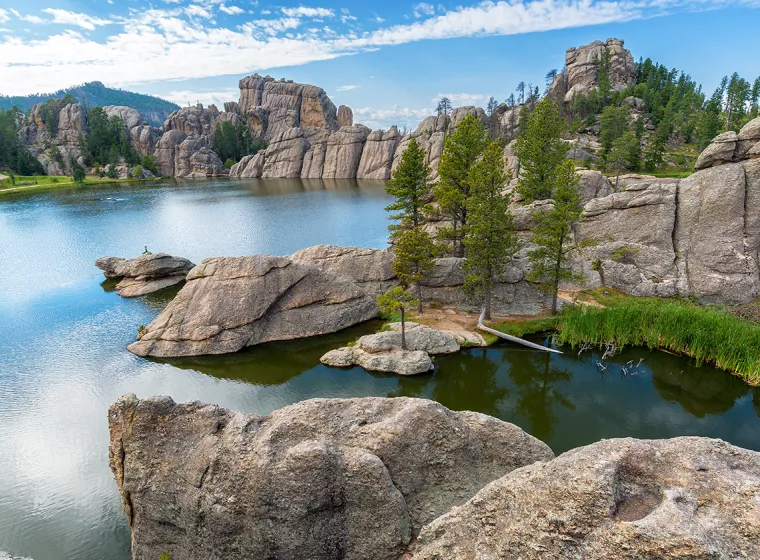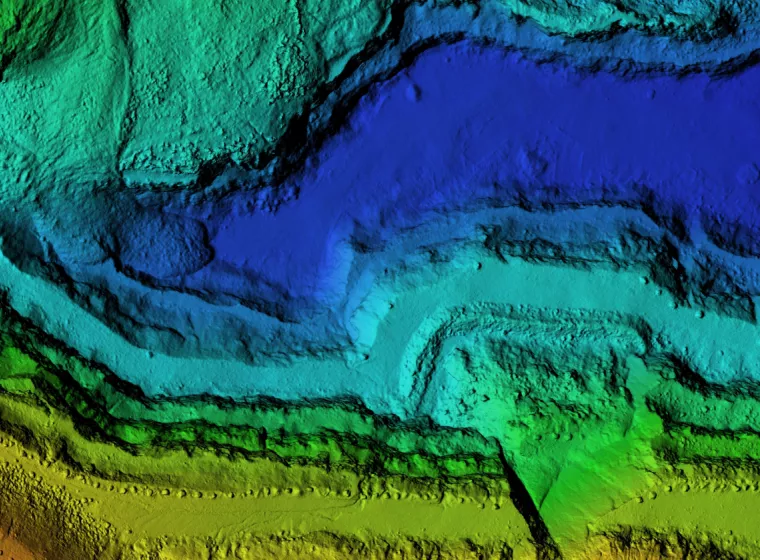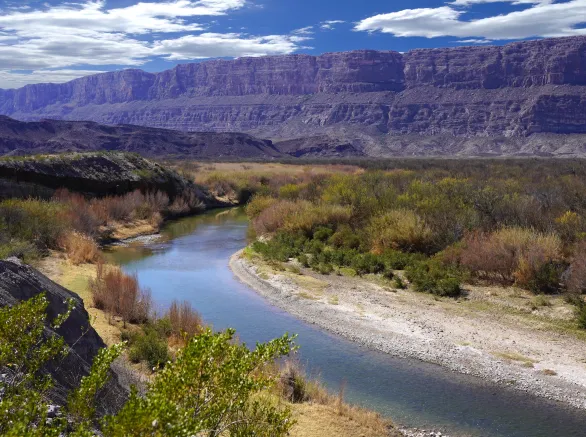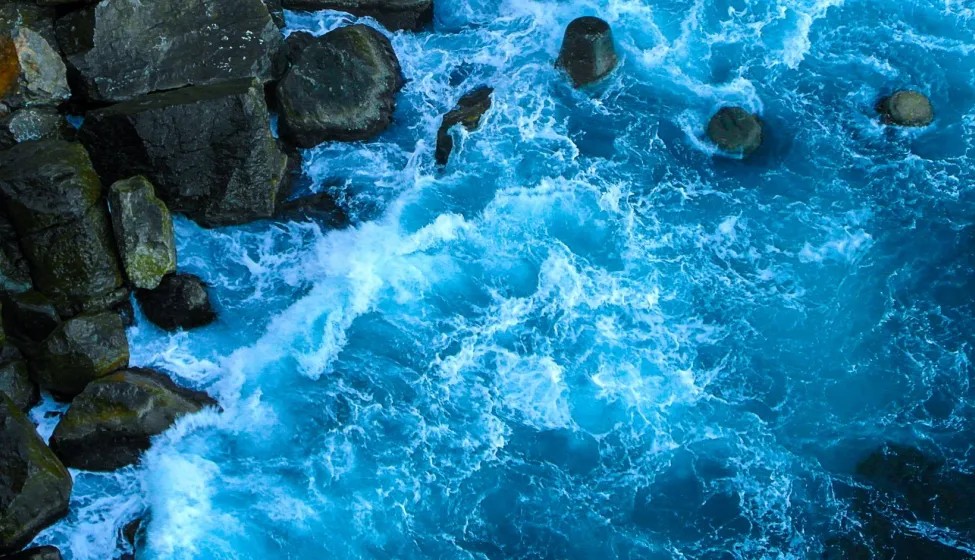June 23, 2025
Recent regulatory approvals to pilot ocean alkalinity enhancement could help advance the development of viable solutions to address climate change
In February, Ebb Carbon, a Washington State based startup company, secured a "first-of-its-kind" National Pollutant Discharge Elimination System (NPDES) permit to conduct an ocean alkalinity enhancement (OAE) pilot project. Then in April, the Woods Hole Oceanographic Institution (WHOI) in Massachusetts received Environmental Protection Agency approval for a separate OAE pilot.
Together, these two projects could represent a significant advance in the fight against climate change, by taking promising marine-based carbon dioxide removal (mCDR) technologies from the drawing board into the real world.
What is ocean alkalinity enhancement?
The world's oceans currently absorb about 2.8 billion tons of carbon each year, around a quarter of all the carbon dioxide humans add to the atmosphere. Carbon dioxide reacts with water at the ocean's surface, forming carbonic acid and releasing hydrogen ions that react with alkaline molecules to form bicarbonate and carbonate ions. This process removes carbon dioxide from the atmosphere and helps slow global warming, but it makes the ocean more acidic — sometimes too acidic for some forms of marine life. The ocean also has a limit to how much carbon dioxide it can absorb, and the more acidic it becomes, the less it can absorb. Certain alkaline minerals (like calcium carbonate) and rocks (like basalt) naturally dissolve into the ocean, increasing alkalinity and reducing acidity, but this natural process can take thousands of years.
Ocean alkalinity enhancement encompasses several methods to make the oceans more alkaline to counteract increased acidity and increase the total amount of carbon the oceans can absorb. One method involves grinding natural minerals, like olivine, into dust and sprinkling them across the ocean or along beaches. Other industrial biproducts (like lime, steel slag, and cement kiln dust) could also be used in this way.
Another OAE method uses electrochemical reactors powered by renewables to treat seawater, splitting it into acidic and alkaline streams. The alkaline stream can then be returned to the ocean, and the acidic stream can be neutralized, sequestered in the deep sea, or used to dissolve alkaline minerals, isolate critical minerals for batteries, or reduce toxic alkalinity of cement waste.
Ebb Carbon's Project Macoma
Ebb Carbon's Project Macoma will extract seawater from coastal waters off Port Angeles, Washington, on the Strait of Juan de Fuca, and run it through an electrochemical reactor about the size of a shipping container. The reactor encases a series of ion-selective membranes that separate the seawater into acidic and alkaline streams.
The alkaline stream will be routed back to the ocean, where it will raise the pH of seawater within an ecologically safe level so the ocean can absorb more carbon dioxide from the atmosphere. The other component, the acidic stream, can be used for various land-based purposes.
One promising and potentially commercially viable application of acidic waste streams is upcycling used concrete. The acidic waste streams from OAE can potentially be added to recycled concrete aggregates to neutralize the acid waste, divert construction and demolition waste from landfills, and generate high-quality aggregates for construction.
Project Macoma aims to remove 1,000 tons of carbon dioxide from the atmosphere during its two-year operation. If successful, Ebb Carbon hopes to roll out its technology in other locations.
WHOI's LOC-NESS
The Woods Hole Oceanographic Institution received EPA approval for its Locking Ocean Carbon in the Northeast Shelf and Slope (LOC-NESS) project under a Marine Protection, Research, and Sanctuaries Act (MPRSA) research permit. Starting this summer, WHOI researchers will add 50% sodium hydroxide solution and tracer dye to an initial patch of 0.19 square miles, within a larger proposed study area of approximately 1,500 square miles in Wilkinson Basin, in federal surface waters off Massachusetts.
The sodium hydroxide solution will increase the alkalinity of the surrounding seawater, enhancing its ability to absorb carbon dioxide from the overlying air, thus reducing atmospheric carbon dioxide concentrations. WHOI scientists will measure the effects of the enhanced alkalinity on the local ecosystem and evaluate how well the sodium hydroxide solution increases the ocean's ability to absorb carbon dioxide. Their ultimate goal is to develop a model of alkalinity enhancement in the ocean to help assess whether this technology is a feasible climate intervention strategy.
Climate change and mCDR
In 2024, the global average concentration of carbon dioxide in the atmosphere reached 422.7 parts per million. That's approximately 50% higher than it was before the Industrial Revolution, and the rate of increase is nearly 100 times faster than previous natural increases like the one that occurred at the end of the last ice age, 11,000-17,000 years ago.
To avoid the worst outcomes of global warming, governments around the world may increasingly turn to technologies like mCDR while also seeking to confirm these technologies do not inadvertently or irreversibly damage delicate marine ecosystems. Companies and organizations performing mCDR methods like OAE will need to work closely with regulatory agencies and conduct rigorous environmental monitoring and assessment to facilitate quick and safe project implementation.
OAE companies and research organizations are just beginning to navigate the complex world of environmental permitting and regulations in the U.S. and around the globe. To test and implement these types of mCDR solutions, they will need to work closely with local and federal agencies. Navigating these regulations requires not only knowledge of the science and engineering behind mCDR technologies but also in-depth experience with environmental permitting.
What Can We Help You Solve?
Exponent's environmental regulation and permitting experts have helped organizations around the globe interface with regulatory bodies and gain approval for their projects. Our teams of biologists, ecologists, and environmental scientists can assess a project's impacts, and our regulatory experts can help support permitting and regulatory compliance.

Environmental & Regulatory Compliance
Rigorous analyses to help clients overcome complex environmental and regulatory hurdles and meet auditing obligations.

Environmental Permitting
Extensive support for compliance with local, state, and federal permitting requirements.
![[EBS] Ecological & Biological Sciences - Environmental Risk Assessment - grey heron grazing in fresh water](/sites/default/files/styles/cards_home_card/public/media/images/grey-heron-2022-01-04-23-54-37-utc%281%29_0.jpg.webp?itok=5EB0lXjA)
Environmental Risk Assessment
Risk assessments for legacy spills and contamination, potential project and product impacts, and environmental remediation support.

Sustainability & Climate Change
Scientific and engineering insights to improve and quantify sustainability practices and secure vital resources and assets.

Environmental Assessment of Contaminated Sediments
Multidisciplinary support for contaminated sediment site management and remediation.

Modeling & Analysis
Experienced environmental analysis and data modeling for a range of complex environmental challenges.
Insights







